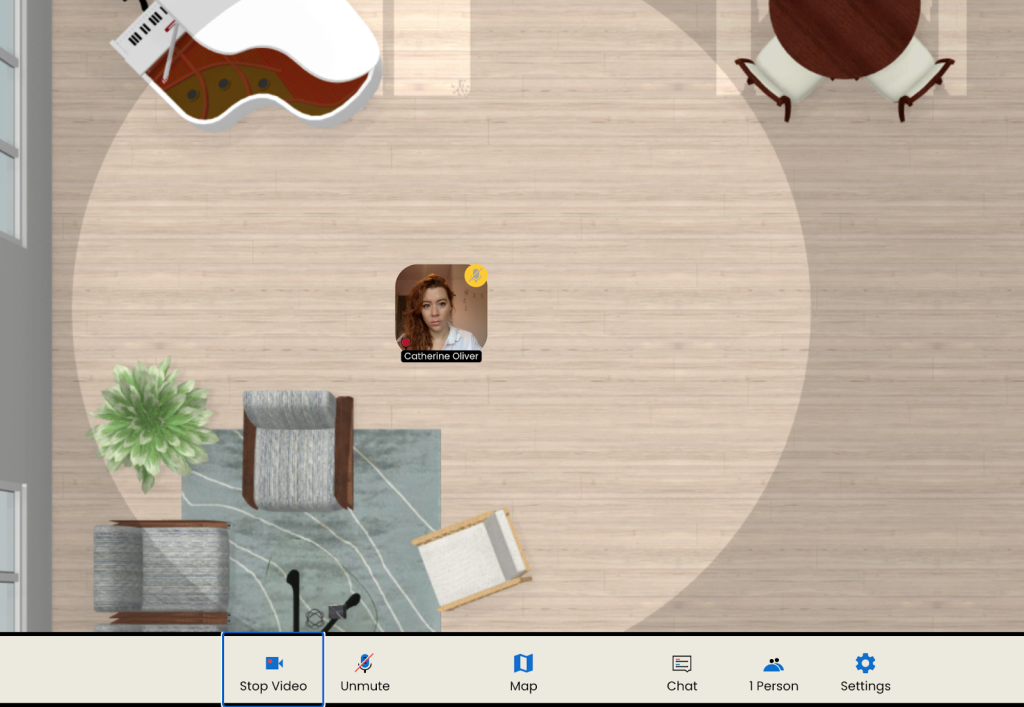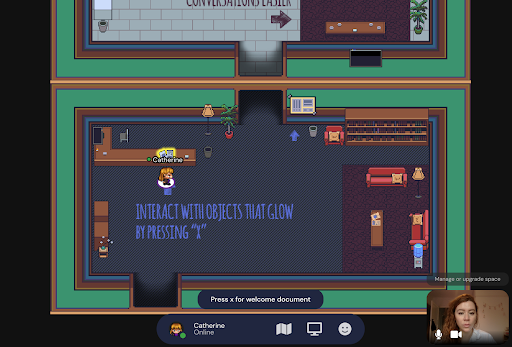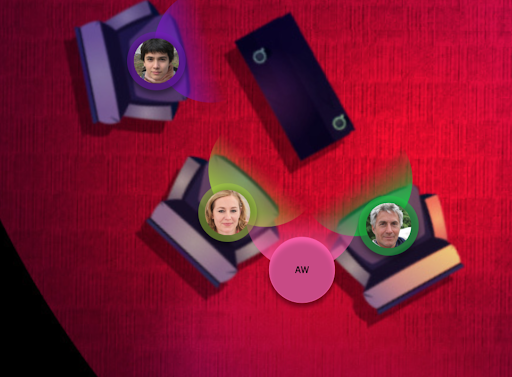Catherine Oliver
Academic conferences serve multiple purposes: to communicate research; to network; to learn about emerging research; and to define the contours of a disciplinary field. However, the ostensibly collegiate intentions of the academic conference have increasingly been co-opted into neoliberal models and performances of “the academic.” Presenting at “prestigious” conferences has become a metric to signal that the “right” kinds of work are being done. The conference is a microcosm of the university and conference relationships, power lines, and networks don’t only represent but actively shape academia. The pandemic has been particularly damaging for early career researcher networks, who are watching on as elite academics solidify their place at the top of the hierarchy. The emergence of new online simulacra of informal networking spaces holds potential to redress these damages but are relatively under-utilised and inaccessible. As we face a return to in-person conferences, I consider how a hybrid model should be prioritised in sustaining and building academic communities.
Conference networks
Success in the academy is often credited to hard-work and talent alone, despite luck, inherited wealth, and proximity to elite institutions and academics (or the “academic circle jerk”) playing a large factor in securing a permanent position. The cutthroat atmosphere in academia, encapsulated by the ubiquitous maxim to “publish or perish,” encourages intense competition and rugged individualism. The pressure to network at conferences instrumentalises academic friendship as spaces and relationships that should be used to “get ahead.” Succeeding at the academic conference relies on learning the untold rules and traditions of the academy and being able to easily move through this space. Interviews with academics revealed that many believed ‘the “real work” at a conference is done at the bar,’ inferring that academic “deals” are secured via social capital in informal conference-adjacent spaces.
The conference falls outside of the everyday borders of the university, but the demands of performing “the academic” are heightened, reproducing exclusions and “outsider-ness.” Conference norms that centre masculinity and whiteness mean that “outsiders” have to work harder to “break into” conference spaces and networks. As Professor Divya Tolia-Kelly wrote in 2017, “felt violences are part of the everyday life for our students, researchers and academic colleagues.” While for many academics the pandemic has jettisoned the conference as a largely enjoyable exceptional space, for “outsiders,” it has been a welcome relief from these violent spaces.
In-person conferences require hidden labour from “outsiders” to navigate spaces produced by the institution of white men, as well as undertaking the work of organising and administrating. This unpaid labour is passed onto precarious staff: ‘desperate to get their foot in the door.’ Doors figure prominently in the physical spaces of the university, marking who is welcomed, and who is kept out; as Sara Ahmed writes ‘this door is a door I can use, I do use, it is usable for me, but it is not a usable door for disabled people with mobility restrictions. To reflecting on usability is to reflect on who a world is built for.’ For some, the doors are and always have been open. For others, they remain closed. But for many, the door is a liminal space; one which opens only at the eleventh hour. “Outsider” academics are made into an afterthought, separate the conventional work of the institution. The doors of the academic conference create a boundary that not only produces insiders and outsiders, but also the outsiders within. The doors of the academic conference have opened during Covid-19, but a return to in-person conferences threatens to slam them shut.
Virtual relations
The pandemic has produced a wealth of free online events. The financial, travel, and temporal limits to conference attendance have, in theory, been lifted. Despite critiques of conferences as reproducing the neoliberal university, they also offer space to meet other scholars and build ‘collective action to resist neoliberal and elitist pressures from within the academy.’ In the first months of the pandemic, conferences were cancelled or postponed but online talks with “elite” academics thrived, particularly asking for commentaries on the emerging pandemic. The early pandemic academic events reproduced a patriarchal imparting of wisdom down the hierarchy, where pre-approved questions, or constraining questions to those invited to be “in the room” reproduced one-directional spaces that, while open, were certainly not welcoming.
Pandemic conferences have preserved elite networks, but there has been less concerted attention at recreating the radical potentiality and spontaneity of informal conference spaces. At the beginning of the pandemic, the “virtual pivot” was based on immediate need, rather than on considered ethical engagements with this space. This has led to near-ubiquitous use of large platforms such as Zoom and Microsoft Teams in a market that is predicted to grow in value by almost 20% by 2026. While the former has been somewhat of a disruption ‘among other major US tech companies, such as those for political lobbying or commercial relationships with the military,’ it has not been without its own political censorships.
Open-source platforms are starting to become more common at smaller events, as are the incorporation or tangential running of virtual networking spaces. The pandemic has transformed the academic conference space and has been a reminder of how valuable academic communities are. The virtual spaces opening up in their place offer new opportunities and reproduce inequalities: talks and Q&A’s have translated with relative ease, but the conference’s role in developing and nurturing networks has not been so successful. A year into the pandemic, virtual networking platforms as complementary to online conferences are beginning to pop up, seeking to reproduce the “real work” of the conference bar.

Kumo Space Conference Room 
High Fidelity’s Networking Space 
The Gather Town Platform
Kumo Space attempts to recreate the conference space online by allowing attendees to join a virtual room and move around with camera and audio on. When you move yourself near to others in the room, you can listen to their conversation and join in. If you move towards the catering table, you can pour a virtual wine to circulate the room with.
In High Fidelity’s networking space, you move a video of yourself around a conference space from an aerial view. As you near others, you can join their conversation and as you move away, these conversations become background noise. High Fidelity also has a “stage” area where the main event can take place, creating a flow between the event and the networking. Moving around these virtual conference breakout zones, my muscle memory of Habbo Hotel comes flooding back to me: navigating a room with the arrows on my keyboard and starting a conversation with these strangers.
Gather Town also reproduces the Habbo Hotel aesthetics. I don a business suit and some blonde hair on my avatar. In Gather Town, you can interact with multiple objects: play games, watch videos, work on embedded files, and write messages, making it a space with a potentially wider scope whilst “gamifying” the conference.
These experiences are not smooth ones. While some of these platforms have the capacity to host conference speakers as well as networking spaces, they are unlikely to be accessible, and they likely require switching between Zoom and a networking space. While the novelty of this space makes it appealing as a space between the formal, and isolating, conference talks, and the private space of the home, the practicalities are less welcoming. How many academics are likely to use these spaces? And who is monitoring the space? The doors of the virtual networking space might be open, and the virtual drinks poured, but the entrenchment of the “real work” of networking in the bar at academic conferences is likely to be reproduced, with all the exclusions that come with them. While these spaces offer potential for hybrid post-pandemic conferences, “outsider” academics are again being asked to do more work in risky spaces in order to belong as university-as-usual is reproduced.
Conferences are an important space for the making (and breaking) of academic communities. The doors to the academic conference are, in theory, more open than ever. But, with the UK government’s intention to get life “back to normal” by the 21st June 2021, the doors might be about to slam on accessible conferences. Conference hierarchies have not been flattened by the pandemic, but new spaces and opportunities are beginning to emerge. While conferences produce insiders and outsiders, they also allow for radical connections to be made; encounters that are more difficult to replicate at virtual conferences. Online networking comes with a host of new relations and rules. But, as we move to post-pandemic hybrid conferences, we must maintain the momentum to radically reimagine not only our academic spaces, but our academic communities.
Photo by Patrick Tomasso on Unsplash
Catherine Oliver is a postdoctoral researcher, currently working on the ERC-funded project Urban Ecologies at the University of Cambridge, where she is researching backyard chickens and chicken-keepers in London. Her first monograph, Veganism, Animals, and Archives is forthcoming with Routledge. She is also a Wiley-Royal Geographical Society Digital Archives Fellow. Catherine’s research in feminist geographies explores ‘dis-belonging’ and the reproduction of neoliberal hierarchies at academic conferences. She can be found on twitter at @katiecmoliver.

Great Article, Thank for sharing
LikeLike